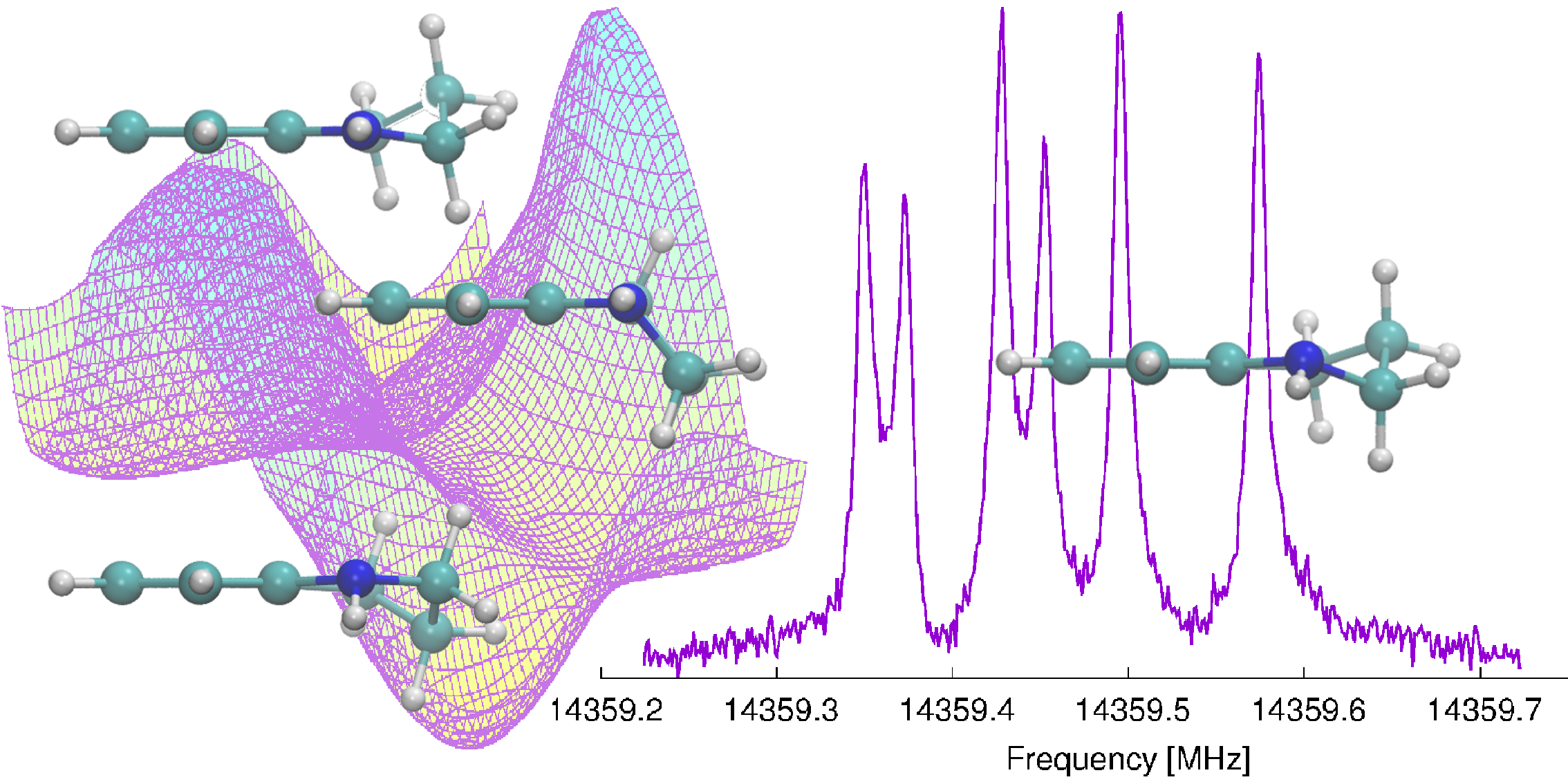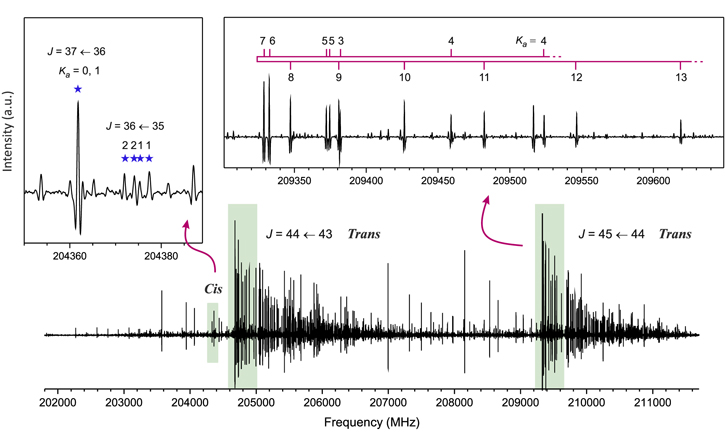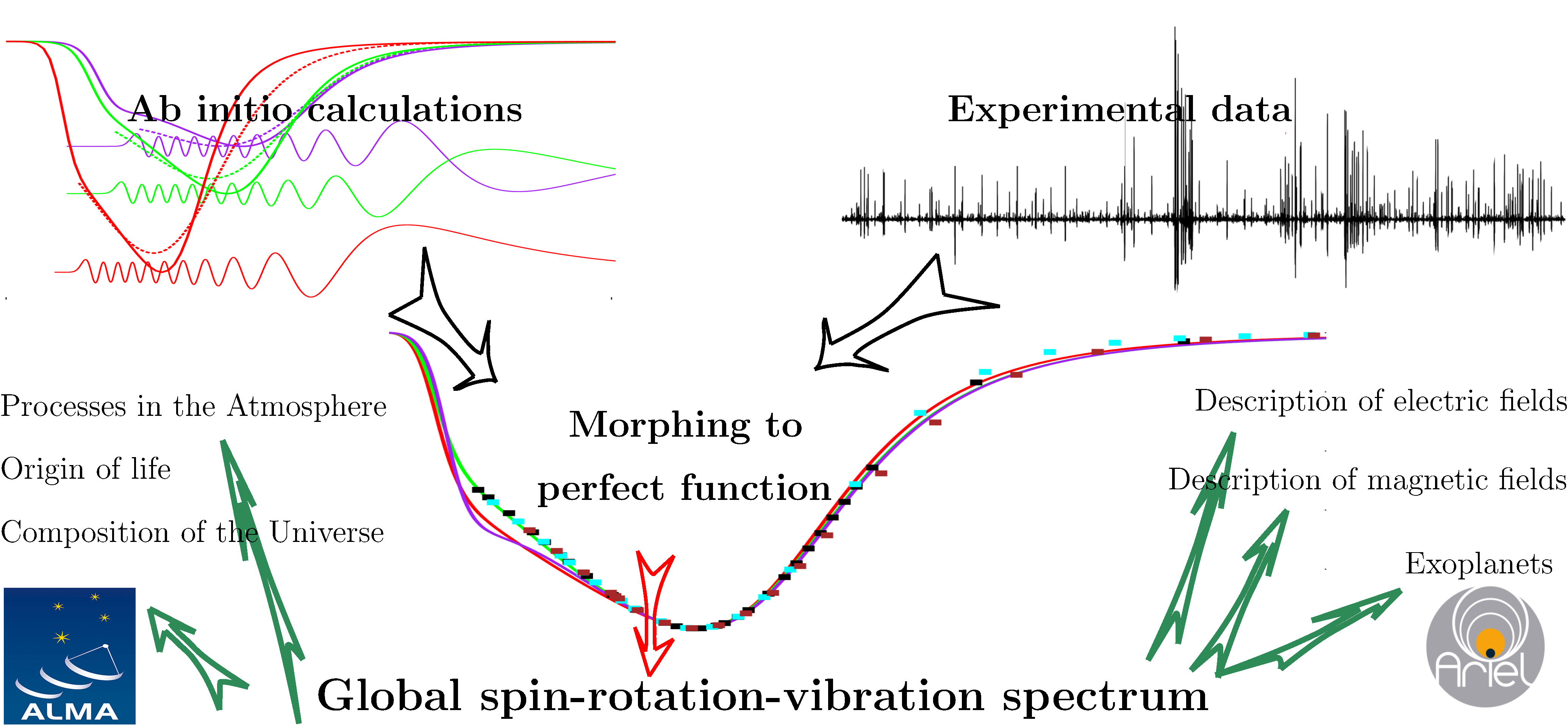Conformational analysis

The saturated part of the 1,2,3,4-tetrahydroquinoline (THQ) molecule allows for the possibility of multiple conformers' existence. High-resolution microwave spectroscopy, supported by high-level quantum chemistry calculations, was used to determine the precise molecular structures of the conformers of THQ. Via the MP2 calculations, we were able to discriminate four stable conformations, i.e. two pairs of energetically equivalent enantiomorphic conformers. The results of the calculations also indicate that energetically non-equivalent conformers are separated by a low energy barrier (104 cm(-1)) that allows for conformational cooling to occur. The high resolution rotational spectrum with resolved hyperfine structure in the frequency range of 7-20 GHz was obtained using both the In-phase/quadrature-phase-Modulation Passage-Acquired-Coherence Technique (IMPACT) and the coaxially oriented beam resonator arrangement (COBRA) to perform Fourier transform microwave (FTMW) spectroscopy. The precise values of the rotational constants, N-14 nuclear hyperfine coupling parameters and centrifugal distortion parameters were determined from the measured transition frequencies. Based on our experimental results, only the most stable enantiomeric pair of THQ contributes to the rotational spectrum under the conditions of our experiment as the less stable conformers seem to efficiently relax to the lower energy conformers. Thus the experimentally evaluated molecular constants unambiguously define the lowest energy conformer of 1,2,3,4-tetrahydroquinoline.
Identification of species in the Universe

A high degree of isomerism in the realm of interstellar molecules stimulates systematic astronomical investigations of members of different families of isomers. Among them, vinyl-bearing compounds have kindled considerable interest due to recent detections of vinylamine, vinylacetylene, and vinylcyanoacetylene. Herein, we open the possibility to search for vinylketene in the interstellar space by means of its rotational transitions. The pure rotational spectrum of the title molecule was recorded in the frequency regions 195–218 and 293–324 GHz and an improved and extended set of spectroscopic parameters has been obtained for the most stable trans conformer. In addition, rotational signatures and molecular constants for the less stable cis form are reported for the first time. We provide a catalog of precise transition frequencies and intensities of vinylketene to the astronomical community and pave the way toward interstellar explorations of C4H4O isomer family.


